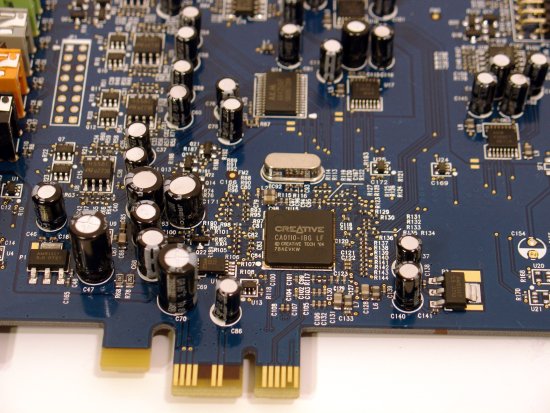Page 2 - Features and Benefits
Features and Benefits
One of the things I like to poke fun at Creative for is their absurdly long product names. This one is no different: The Sound Blaster X-Fi Xtreme Audio PCI Express. The box we received is the European version (makes sense, this is the Netherlands youre reading). The North American version might be different on different packaging, but I can't confirm it. They do have one nice thing on the back of the box: a graph explaining how the Crystallizer works. It's almost like explaining The Force, man.
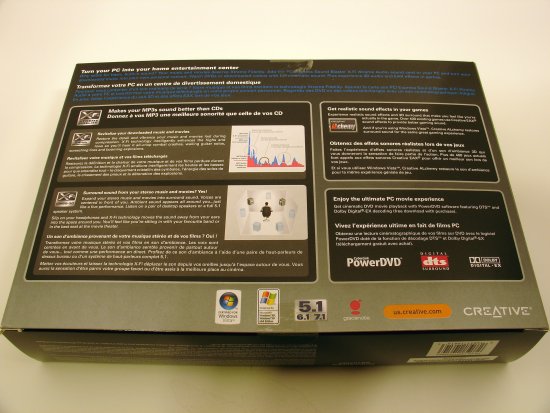
One thing we can say about Creative, though, is that they do consistently cram a ton of features, useful or not so useful, into their sound cards. And Creative were not shy about bullet points on the box. However, with this X-Fi, the bullet points are not so informative.
So we make some ourselves. Check it:
- 7.1 Surround Sound, with DTS and Dolby EX decoding
- Optical S/PDIF Output and Input
- Microphone input
- 24-bit/96 KHz resolution
- ALchemy (OpenAL) for Vista sound acceleration
- EAX for Windows XP DirectX acceleration
- Crystallizer, CMSS 3D, upmix and Headphone modes
- PCI Express 1x interface
- Certified for Microsoft Vista
I can attribute the dearth of features directly to Vista. It should be well covered ground by now, but Vista does not allow direct access to hardware, and with no direct access to hardware, theres no EAX or DirectX acceleration. Gone. Poof. Cue the crickets. Creative do have the OpenAL/ALchemy wrapper for Vista, but they arent making a lot of noise about the usual DirectX acceleration, or the EAX 5.0 HD environmental sound extensions because this particular X-Fi cannot actually do it. More on that in just a tick.
Let's take it from the packaging.
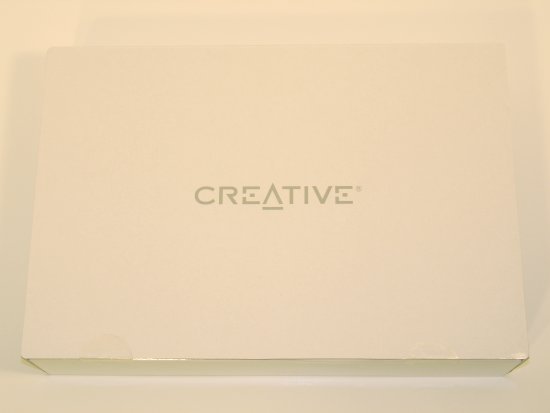
Sorry about the poor white-balance. I just built this lightbox and am told that one needs to set the camera for manual white-balance (thanks Jed!) so pictures don't look too nasty. Once the packaging is off there's another box inside that's fairly plain, and is very Mother-Alien mouth-within-a-mouth like. Or very Apple-like. It could easily get a Golden Cocoon Award for all the foam and cardboard its got.
Wait, there's more?
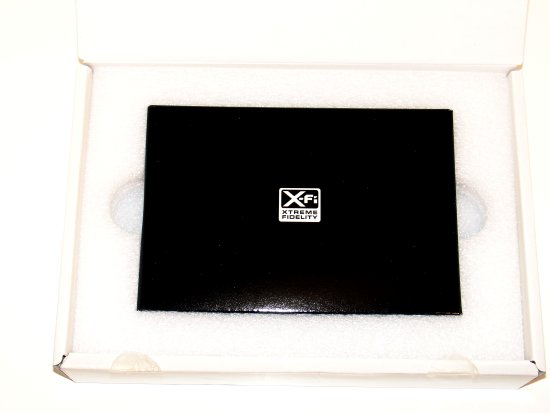
Hey there, little mouth. Anyway, I tend to get a little leary of too much packaging, but Creative does an elegant job. It could mean that Creative paid more for the packaging than for the chips.
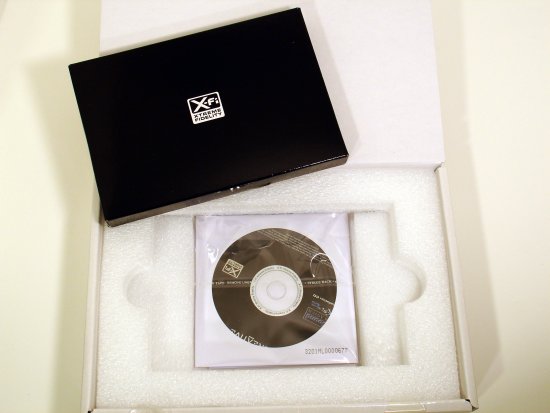
I do like the fact that it's simple, just the card and the drivers. There's some paperwork included, too, like an install guide, and surprisingly, a card that explains the benefits of purchasing an extended warranty. How very used-car like.
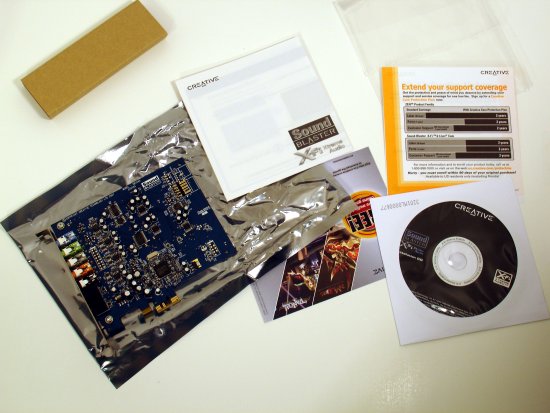
A regular X-Fi uses the 20K1 DSP, but this X-Audio does not use that same DSP, it is using a rev of the Audigy 10K1 DSP. Remember that one? Before you scream, Impostor! at your monitor (and I can tell, some of you really should clean your monitor), it does make some sense for Creative to release a sound card with Vista in mind. And this is it: If youre running Vista, then all sound cards are treated equal, no direct hardware access, so whats the use of buying more sound card than you could use? Since the X-Audio doesn't support all the features of the higher-end X-Fis, which arent available at all in Vista, why pay for them? Makes some sense, don't it?
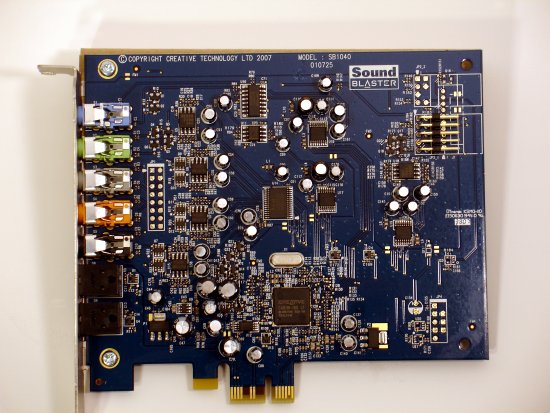
It is hard to imagine, but the old X-Fi XtremeMusic was killed off to be replaced by this X-Audio. Creative do make a lot of noise about the fact that this X-Fi Xtreme Audio comes in a PCI Express 1x interface. I will have you notice, theres no bridge chip. Its in the APU itself. Yep, Creative did a rev of the chip to squeeze PCIe support into the chip. If I didn't cover it already, this X-Fi does support the Crystallizer and CMSS3D effects from a true X-Fi.
The DAC onboard is a decent-quality AKM 4359VF, which is an 8-channel, 24 bit/192 KHz DAC, with a pretty good 106dB signal-to-noise ratio. These are used in DVD players mostly, but work nicely for sound cards for their channel density, and ability to work well with low voltages. Of course, in an electrically noisy environment of a computer, achieving anything close to the 106dB SNR will be somewhat miraculous.
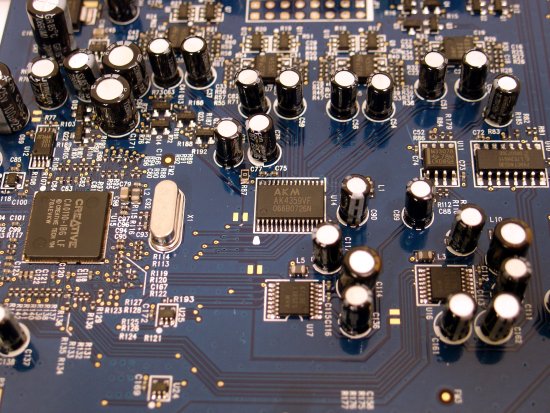
There are 2 AKM 5358A chips on the X-Audio as well, which are 2-channel 24 bit/96 KHz, 102dB SNR analog-to-digital converters. One of them is for the microphone input, I'm sure, and the others function is somewhat a mystery, but I think it has to do with the connector block a short distance away.
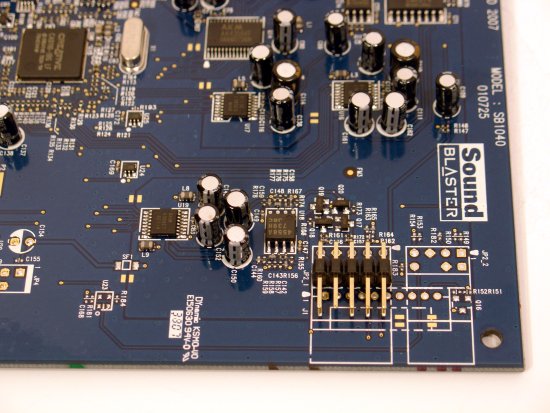
Theres also a single AKM 4388, a 2-channel 24 bit/192 KHz DAC, another whose purpose seems to elude me, but also likely for the extra connector pins nearby. Since they aren't labeled, it's not clear exactly what these are for. But I'll hazard a guess it's for front panel headphone and mic connections. Thanks Xavier, I don't normally test for these, since I don't use 'em.
Without Auzentech, and their line of sound cards with replaceable op-amps, we probably would not care so much about the output section of this X-Fi. But, the X-Meridian and Prelude do exist, so we must. The output is handled by a bunch (4 to be exact) ST Micro 4558s, which are high-performance monolithic dual operational amplifiers. Say that five times, fast. These op-amps offer a rather wide bandwidth, and can work up to 1 MHz, without introducing significant distortion. If nothing else, they offer circuit designers decent flexibility in terms of gain settings.
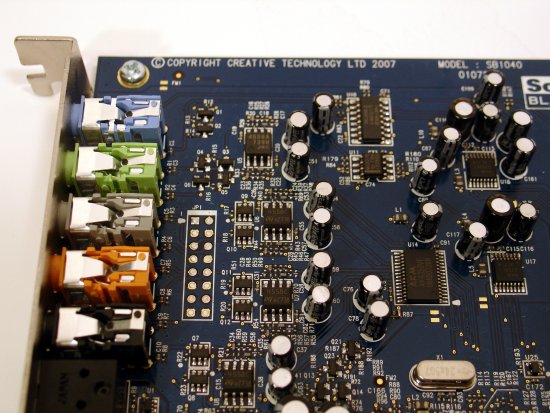
Parts-wise, the X-Audio is bristling with high-quality electronics. The discreet sound card market has turned into a very competitive market, and stuffing a board with less than excellent components is a bit unwise. Creative seem to realize this, and this X-Fi shows it.
